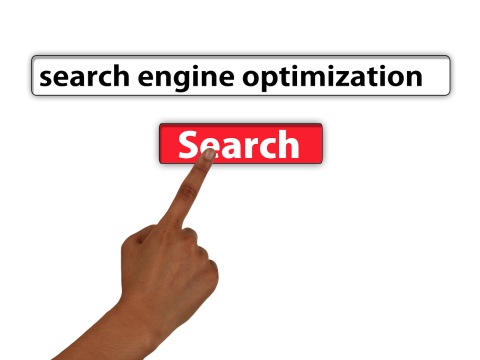SEO and writing don’t have to clash. In fact, they can work together in a healthy and collaborative relationship.
Writing SEO copy isn’t different to writing good copy; and armed with a few simple SEO techniques you can optimize your content and maximize its ranking potential and exposure.
Find out how to create rich search engine friendly copy, without sacrificing writerly principles.
Why Bother with SEO?
So you are a writer- why should you bother with SEO as well? The truth is, learning the basics of SEO writing doesn’t take long and it will make a huge difference to your writing (and your career). Here’s why SEO should be part of your writing:
- Writing search-engine friendly web copy will make your writing skills more in demand
- SEO-writing is a lucrative niche
- SEO will make you see your copy in a new way (in a good way)
By producing search engine friendly content, you are cutting out the middle man who would come in after you to optimize your content. By doing the optimization yourself, you will have more control over the finished product.
Make Your Content More SEO-friendly – 10 On-Page SEO Tips for Writers

Here are the main practical ways to make your web content more SEO-friendly: use these tried and tested techniques to maximize your writing and get more return for you and your clients:
1. Keyword Research & Themes
Keyword research should be at the core of every single piece of web content you write. Without keyword research you are just writing for yourself, with no reference to your audience and the words they actually use.
When doing keyword research, think beyond simple phrases to themes, picking up synonyms and natural variants along the way. Keep building your keyword lists as you write, and refer back to them on a regular basis to keep you on track.
All this is part of a healthy writerly practice and will challenge to write more concise, accurate prose. It will also inspire you to be more creative.
2. Keyword Density & Relevance
It’s easy to lose sight of keywords as you start to write, you’ll often be thinking that you are using them ‘loads’, only to realize your density has plateaued at 0.2%. Little quirks of language and writing can easily interfere with keywords in your copy. It’s not about obsessively aiming for the ‘correct’ density (which is still a hot topic amongst SEOs to this day), but about making sure you are still actually using them! There are handy online tools which will generate keyword densities from plain text, keep checking back on your keywords. A few days’ break working on some other content will often give you renewed perspective.
3. URLs & Title Tags
A SEO-friendly URL is the right length (not too short or too long) and includes relevant keywords that are reflected in the page copy. A good example of a relevant URL for this post would be https://www.fincyte.com/category/seo, whereas a badly optimized one would be something along the lines of: www.fincyte.com/6hsjsjik – this is irrelevant and does not tell Google anything about your content.
Your page title is very important because it tells Google what your site is actually about. In fact, after page content, Moz tells us that “the title tag is the single most important on-page SEO element”. So it’s worth getting it right! There is no ‘perfect’ page title formula, but here are a few key points:
- Use your strongest and most relevant keywords in your page title
- Think about whether including a location would be beneficial
- Usually, it’s better to have keywords first, brand name second
- 55 characters is the optimal length, check your page title’s length here
4. SEO Headings
HTML headings are great because they not only help the user, but they also help Google crawl your page. Make sure you optimize all your headings with relevant keywords.
Search engines give headings decreasing importance, so make sure you treat the H1 with respect and use it for your most relevant keywords. Don’t just think blindly about keywords, the headings structure has to be logical.
Top tip: If you want to rank for a specific keyword, make sure it’s in your page title, H1 and page copy.
5. SEO Page Segmentation
The whole point of headings is to guide the user through your content, and the way that your content is laid out on the page is part of it too.
Google’s algorithms know how people read websites, so make sure your page segmentation makes sense. Page segmentation is how your content is laid out on the page. You want to front-load your most important content, not have lots of irrelevant text and ads crowding your keywords. Make sure the page design allows the copy to ‘speak’.
Top tip: Use image alt texts wisely; include relevant keywords to help the user and search engines figure out why the image should be there. Think carefully before choosing a generic image.
6. Meta Descriptions
Meta descriptions come up in search engine results for your site and can be a powerful tool.
Though not directly rank-able elements, strong meta descriptions displayed in SERPs lead to more conversions and clicks, so it’s worth spending time writing unique and optimized descriptions.
Top tip: Searched for keywords are highlighted in meta descriptions, so include your top keywords in your description.
7. Synonyms & Semantics
Search engine algorithms crawl your content in a variety of ways, so don’t just stop at keyword density. They actually look at the semantics of your copy and how well keywords and phrases sit together.
Using synonyms is a healthy SEO tactic, so make sure you are aware of the natural and close variants of your keywords.
Always use natural language. Co-occurrence (words that often appear together) will increase the relevancy of your content, and the actual positioning of keywords and phrases is also tracked for relevancy. Check out some more advanced onsite SEO concepts from the Moz blog.
8. Unique
Your copy, page titles, meta descriptions, image alt texts: all content must be unique.
Search engines are very good at picking up on duplicate copy so avoid this at all costs. It’s unlikely you would inadvertently write duplicate copy, but make sure you vary your language and vocabulary if you are writing on the same topic a lot.
9. User Value
Adding user value and answering peoples’ questions are the two main SEO goals. You can’t earn the top ranking in Google without actually deserving it. Make sure your writing is of high quality and that is always adds value to the user.
10. Linkable and Linking
In SEO, all content must be a linkable asset. Don’t ever forget that. Internal and external linking are both healthy SEO tactics, so make sure you are always optimizing your writing’s linking potential.
Outbound links help the user, and inbound links build authority. Don’t overload the user with links, but make sure they have got enough to go on.
Next Steps
After finishing your web copy, share it on social media if it’s newsworthy. Ping it out to key influencers and interested parties to amass social shares and links. If it’s a service or commercial page, ask Google to index it via the Search Console, and watch your rankings improve.
Writing for search engines and writing for people is essentially the same thing. How do you feel about SEO-writing? Tell us in the comments below.
Author Bio: Marcia Jordan
















